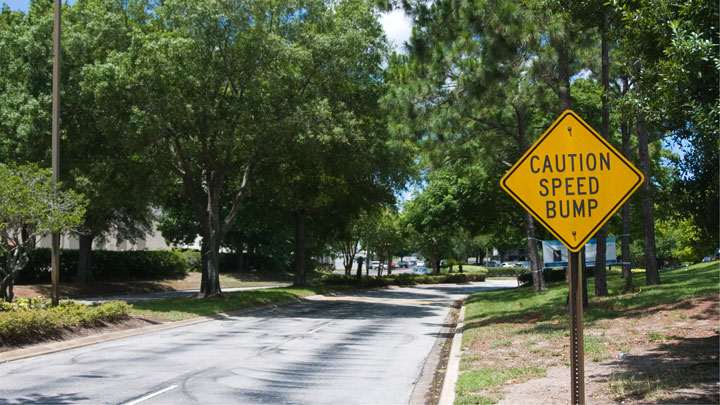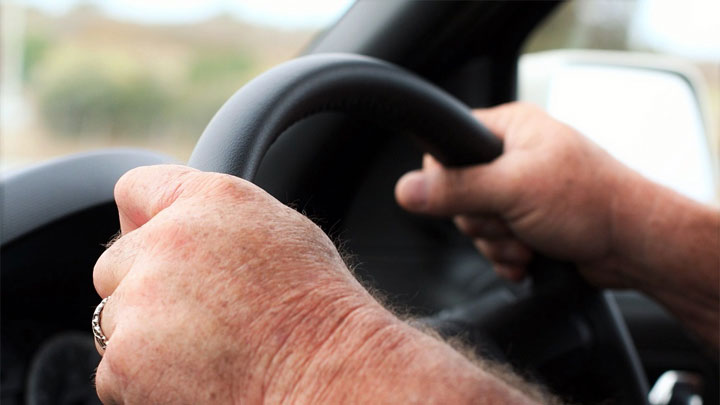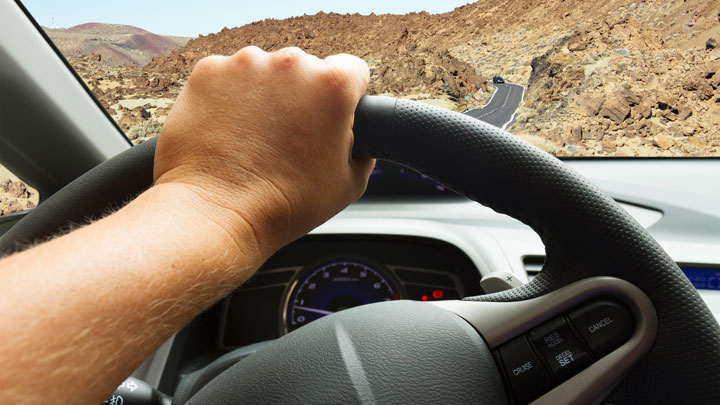5 Symptoms of a Bad Transmission Mount (and Replacement Cost)
Who knew such a small part could cause major trouble? That “unusual vibration” when accelerating shifting gears signals big issues brewing beneath your vehicle.
Transmission mounts act as shock absorbers, and worn ones reverberate throughout your car. Catching and replacing a faulty transmission mount early, often prevents further damage. We’ll cover what to watch for, why mounts fail, and how much it’s going to cost to fix the problem.

What Is a Transmission Mount?
Similar to how motor mounts secure the engine of a vehicle, transmission mounts (along transmission mount brackets) secure the transmission of a vehicle to the chassis. In addition, they control and isolate any vibration from a vehicle’s driveline and make sure that the angles of linkages and the driveshaft are correct.
A typical transmission mount has a urethane or rubber bushing which is bolted, welded, or bonded to a bracket. The entire component is secured to the vehicle. Most vehicles have one or two transmission mounts but sometimes more.
Related: Symptoms of a Bad Motor Mount
Where Is It Located?
In most vehicles, the transmission mount is located beneath the engine, where the transmission and engine meet. For front-wheel-drive cars, the mount is typically found at the side of the engine compartment, close to the front wheels. In rear-wheel-drive vehicles, the mount is usually positioned towards the rear of the engine, near the driveshaft and rear-axle assembly.
When searching for the mount, look for a sturdy metal bracket bolted to the frame on one end and the transmission on the other. Often, a rubber bushing is inserted between the two to dampen vibrations. Some vehicles have multiple mounts working together to stabilize the transmission and minimize noise and shaking.
While the location of the transmission mount is generally consistent among vehicles, there still might be some variations depending on the make and model of your car.
Bad Transmission Mount Symptoms
These mounts come in a range of shapes and designs. The purpose for all of them is the same, though. They’re made up of rubber and robust metal, which is necessary to overcome the torque generated by the engine.
The rubber dampens the vibrations to such an extent that, if there’s a problem here, you’ll know. Here are five common signs to watch for:
#1 – Clunking, Bashing, and Banging Sounds

If it sounds like your engine is trying to break out, that’s an example similar to a loose transmission mount noise. The clunking is from metal bashing into metal. As the engine moves, it shifts in position.
When the mounts are in good shape, they anchor everything securely. When they’re giving out, they’re no longer able to hold it securely. Your transmission is not likely to drop out of the car, but driving it is not an option.
The weight of the shifting transmission can damage other vital components inside. If a rear transmission mount gives way, you won’t get as much noise as you would from the engine but expect some considerable clanking sounds.
#2 – Thumping

You’ll notice this sound more when you are going over a bump. It is also caused by transmission shifting while driving. The motion is more of an up-and-down movement, rather than side-to-side, though, but equally dangerous.
If the connections have loosened to this extent, taking a sharp corner could be rather hazardous.
#3 – Excessive Vibrations

If the car is shaking your real teeth loose, you need to have it sorted out. The vibrations from the engine, if not correctly managed, can become intense. It will not only prove uncomfortable for passengers but also distracting for the driver.
See Also: Reasons Why Your Steering Wheel Shakes
#4 – Chassis Flex

It is something that might take a while to develop. If you haven’t noticed that something is wrong by the time that this has happened, then we’d be surprised.
The shifts in weight can cause a flexing of the car frame. Over time, this can cause the frame to become misshapen, and the doors might not be as well-aligned as they were previously.
#5 – Difficulty Cornering

There’s no easy way to describe this symptom, but if the engine is loose, it will shift as the car moves. If you turn left, for example, the engine might shift to the right, which would cause a weight imbalance.
The momentum of the engine might make it harder to pull out of that turn, and this symptom is simple to diagnose. You’ll notice that this inertial force impacts the car. You’ll no doubt also hear some funny noises coming from under the hood.
You’ll notice this problem particularly on corners or when you’re accelerating. It might also be noticeable if you’re driving down a hill, although there should only be one significant shift in that instance.
#6 – Visible Damage

Visible damage is the most obvious sign of a failing transmission mount. Cracks on the surface or rubber bushings indicate the mount can no longer absorb vibrations properly. Excessive wear causing sagging, discolored components shows the mount is strained from supporting the transmission’s weight over time.
Rust or oxidation develops from exposure to moisture, salt, and corrosives that gradually weaken the structure. Any cracks, worn spots, or rust noticed during inspection means the transmission mount requires replacement to prevent further deterioration.
Carefully checking for these clear signs of physical damage can reveal if your mount needs attention before problems worsen.
Causes of Failure
#1 – Wear and Tear
Like all components, transmission mounts deteriorate with age and mileage. The rubber or polyurethane cushioning the mount wears down over time. As it loses elasticity, the material fails, allowing excessive engine movement and related problems.
On high-mileage vehicles, these mounts are especially prone to the cumulative effects of vibration, force, and time, ultimately requiring replacement. Worn transmission mounts are an expected maintenance need as cars rack up years and miles on the road.
#2 – Accidents or Impact

A damaged transmission mount can also result from accidents or collisions. The impact may compromise the structural integrity of the mount, causing it to crack or break entirely.
Like a worn-out mount, this damage enables excessive engine movement and vibration. Even without visible exterior damage, the forces of an accident can take a toll on components like motor and transmission mounts. So any significant impact makes inspecting the transmission mount a good idea to avoid subsequent issues.
#3 – Improper Installation
Improper installation or adjustment accelerates transmission mount failure. If mechanics don’t properly secure or align the mount during transmission work, it’s prone to early deterioration.
Only qualified technicians should handle transmission maintenance to ensure components like mounts are correctly replaced and calibrated. Even minor mistakes during service can compromise the mount and lead to premature wear.
#4 – Corrosion

In regions with harsh weather, like heavy snow or salt exposure, transmission mounts face corrosion risks. The metal components can oxidize and deteriorate when subjected to such conditions over time. This corrosion progressively weakens the structural integrity of the mount until potential failure.
Transmission mounts in vehicles operated in snowy, salted climates require vigilance against rust to maintain their function. Harsh winters and regular salt contact accelerate wear and tear, making corrosion a prime culprit in mount degradation.
#6 – Manufacturing Defects
Though uncommon, manufacturing defects can sometimes cause premature transmission mount failure. Despite quality control, an anomaly in materials or assembly may slip through, compromising the mount’s longevity.
While a rare occurrence, it remains a possibility to consider when diagnosing early mount deterioration. In many cases of defects, low quality aftermarket mounts are often to blame. While their lower cost may be attractive, many aftermarket brands don’t manufacture parts to the tight tolerances that OEM parts typically have.
Transmission Mount Replacement Cost
Best places to order parts? See: 19 Best Online Auto Parts Stores

The costs will depend on the model of the car and the brand of the mounts. You’re looking at around $50 to $150 per mount for parts. As far the work performed, expect about $200 to $450 in labor costs simply because of how difficult it is to get to a transmission mount.
The job is usually a big one. If the mounts are easy to access, then you’re fine. If not, they’re going to have to remove many of the components inside the car to get to the problem, and that takes time.
It’s best to get a quote on labor from your mechanic and a couple other independent shops. All together, total transmission mount replacement cost will be in the range of $250 to $600.
Another thing to consider is replacing all the mounts at the same time. Considering the size of the job, it might be more efficient. The mounts should last about the same amount of time, so if one’s deteriorated to the point of replacement, the others won’t be far behind.
You shouldn’t drive your car in this condition, so add some budget for towing as well. You’re not going to know the full extent of the damage until the car is in for repairs. The loose transmission may have damaged another aspect of the vehicle, so wait until your mechanic has inspected it for more details.
Can a Bad Transmission Mount Cause Slipping?
If the mount is loose, the transmission can slip. If the issue is left too long, there’s a possibility that the transmission might even fall out. That’s the worst-case scenario, but it could happen.
It is one area where you can’t take chances. It’s best to pull off to the side of the road and call for help.
Driving a car in this condition is dangerous. You risk damaging your car even more if you drive it in this condition. Do you want to risk damage to the frame of your vehicle?
Do the smart thing – get the car fixed, or park it until you can.
Testing for a Bad Transmission Mount
Let’s go over the process of testing for a bad transmission mount to confirm the correct diagnosis. Only attempt this if you feel confident in your mechanical abilities and have the appropriate tools on hand.
- First, gather the necessary tools for the job. You’ll need a floor jack, jack stands, and a large screwdriver. Make sure to work on a flat, level surface to ensure safety.
- Begin by carefully jacking up your vehicle using the floor jack at the proper jack points for your vehicle (check your owner’s manual).
- Once it’s high enough, place jack stands under the appropriate support points to secure your car in place. This will provide a safe working environment and make the job much easier.
- With your vehicle safely supported, grab the screwdriver, and pry on the transmission mount slightly to observe its condition. A healthy transmission mount should give a little, but bounce back when released. If you notice that the mount doesn’t return to its original position or seems excessively flexible, it could indicate a worn or damaged transmission mount that needs replacement.
Alternate Testing Method
Another method for diagnosing a bad transmission mount is by starting the vehicle and observing the engine and transmission as you apply power. You will need another person for this.
Have your assistant start up the vehicle. Have them shift it in Neutral and with their foot firmly on the brake, have them gently press the accelerator pedal.
As they do this, watch for excessive movement in the engine compartment. If the engine and transmission move more than they should, it’s likely due to a worn or damaged engine or transmission mount.
- Replace the Engine or Replace the Car? (11 Factors to Consider) - Apr 11, 2024
- Plastic Piece Dragging Under Your Car? (What It Is and What To Do) - Mar 21, 2024
- Timing Belt vs Timing Chain (What’s the Difference?) - Feb 27, 2024

My daughter has a 2017 Chevy Cruze. When she puts the car in gear there is a thumping feel & when going in reverse the car thumps hard while go backward but no issues going forward or turning. I’m thinking it’s the trans mount. What do you think?
That’s a good guess but I’d have a mechanic to check to see if it isn’t an issue with the transmission itself.
I think it’s best to do this in person.
I am in Santa Clarita CA. Do you have local advisors for your customers.
Sorry, we are online only. Ask around your area for some recommendations and you’ll find a good shop.
I was told I need to replace the engine and motor mounts on my 2002 s430 Mercedes. I also read if they do not connect back right I could have another problem with the car running right.
just bought a 2011 honda CRV with 107k miles, every time i i’m in drive or i idle at a light my car starts to vibrate and i can feel it in the steering wheel and when in sitting in the seat.
Does the vibration feel like a rough idle?
Yes
I had the struts and engine mounts replaced in my 2009 Traverse and the engine died within 5 minutes of driving it away. The mechanic has been trouble shooting for 2 days now. Any suggestions?
How strange; struts and engine mounts should not have anything to do with the engine running properly.
Did the mechanic bump any ground straps? Perhaps one broke while performing the repair, or perhaps he forgot to reconnect one or tighten it down. Otherwise, I suspect the problem may be unrelated.
2018 chevy impala…when pressing the gas to accelerate the car feels like its almost bouncing especially when accelerating after a stop or going up a hill…if you let off the gas it seems to subside but you have to find the right mixture between pressing the gas and letting off of it to get the bouncing / vibration to stop. it doesn’t do this when going at a steady speed like on the interstates but when going through a city with a lot of lights or up hills it goes through this bouncing /vibrating until back at a steady speed. with it being so new I’m so lost on what it could be. tried replacing all four tires as it seems like its coming from the tires but after replacing all of those the issue persist. any suggestions is helpful.
It sounds like wheel hop and my first thought was hard tires that aren’t gripping very well. I’m wondering if maybe the shocks are blown and that is making it more prone to hopping under hard acceleration? I might bring it by a local mechanic to see what they have to say about it.
My sister has a 26 year old Chrysler. She recently had right and left struts on the front replaced. Also the rubber transmission mount was replaced. They told her the transmission had dropped a foot. After repair she drove the car. It started dying on her. She says they did not raise the transmission and put it back in place properly. They say it has nothing to do with what they did. Any comments??
They might be right. How did the transmission drop a foot, from the worn rubber mount? Did they figure out why it was dying the second time?
My 2007 monte Carlo has had a bad lower motor mount and a bad transmission mount for like 4 months now all of a sudden my car won’t go forward in any gear but will reverse. When I put it into park the motor rocks
I’m not sure what the problem could be. Perhaps something was damaged in the transmission after the mounts went bad?
Hello looking for any help i can get. I have 2005 Toyota Tacoma 4X4, 6 cylinder. I have taken to just about every mechanic in town even the dealer. The problem is that every time i take off after stopping there is a thumping sound. I my self thought it might be the diferrerntial. My son says it might be motor or transmission mounts. These aren’t even things that the mechanics think the problem is. The dealer want to replace all arms which would cost over $3500. and even then its not a for sure thing. Can you pleashelp
Can you tell if the thump is coming from the front or the rear of the truck? My guess would be engine, transmission, or differential mounts. Sometimes these mounts get soft with age and it can be hard to tell if they need replacing.
Were the mechanics able to replicate the problem?
Hi. My car transmission are not engage the gears and the gear mountain rubbers are finish are no longer full in the bracket.
Gear box and the engine pulled down i don’t know it is the caused of the scenario.
May can you please help me with this matter any suggestion.
Kind regards
B.A.Maseko.
Is it an automatic or a manual transmission?
1998 Dodge Grand Caravan
“THUMPING”‼️ Lord does mine ever on driver side after replacing entire suspension component. I suspect now it’s the Left Transmission Mount either loose from coming unbolted (bad mechanic install of transaxle) or going bad since the front mount had to be replaced. My question is how do I get access to find out❓ My book doesn’t tell me on this 41TE transaxle.
Check to see if Dodge has a factory service manual that they offer for that vehicle. Your model is old enough you may be able to find something else for free online. If all else fails, you could try checking a site like ALLDATA for more vehicle service information.
Hi can a worn mount cause the gear box to break gear five?
I suppose it could but I think it’s unlikely. What happens when you try to put the vehicle in 5th gear?